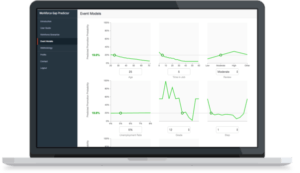Following the April 12 release of OMB 17-22, agencies have been scrambling to come up with a strategy to complete the required Agency Reform Plans ahead of the September 30, 2017 deadline. The topic on everyone’s mind is how to conduct the comprehensive workforce analyses the Directive requires, as well as propose wholesale changes to people, process, and technology.
OMB is actively working to make the Federal Government, “lean, accountable and more efficient” through technology and process improvements and by reducing the overall federal workforce. With this objective in mind, OMB 17-22 requires major changes to Performance Management and a review of critical functions and responsibilities of each agency. EconSys, a leading provider of Human Capital solutions for the Federal Government, unpacked the memo to fully understand the scope of the requirements.

Our conclusion is a thorough Workforce Analysis with a solid quantitative backing, is the basis on which each productivity improvement, process change, and personnel reorganization will be evaluated. OMB will be most receptive to proposed Agency Reform Plans that include a solid foundation of data and analytics.
Workforce plans do more than paint a detailed picture of the current workforce. They are powerful tools to measure implications of different policies and strategies as well as to forecast t the impact of trends and environmental factors that you may not even be aware of. They inform how to plan for shifts in your workforce at every grade and occupation due to retirements and expected turnover, so that you can make plans to cover workforce gaps well ahead of when they occur.
With OMB 17-22’s broad sweeping impact and short timeline, EconSys has identified three key attributes that should be part of any workforce plan:
1. Forecast How Your Workforce Will Evolve
Workforce plans begin with a portrait of the current workforce but are made valuable when the plan can articulate how the workforce evolves over time. Employees will leave, retire, or be asked to leave. Other employees will be promoted or transfer. As the workforce changes, it’s important to understand where gaps will develop – by grade, occupation, and location.
Do you know how many hires at which grade levels for mission critical occupations you will require over the next five years to continue to deliver today’s productivity level?
When you are evaluating the implications of your Agency Reform Plans, you need a workforce planning tool that can project into the future. The short-term impacts may be easy to see, but it may be the long-term projection that helps to make a case for an alternative. Make sure you’re working with a planning tool that delivers long-term forecasts at the occupation and grade-level.
2. Strengthen Your Case with Scenarios
From performance management to organizational structure, policies and strategic changes are interpreted in workforce planning tools in terms of occupational series and productivity rates. The resulting workforce analysis needs context to quantify its meaning. How does this compare to an alternative where there is a hiring freeze? Or a scenario that is based on historical growth? And how many employees will we need to meet future demand for our agency’s services?
Scenarios give you the ability to compare and contrast gaps in workforce capacity under different conditions. Scenarios allow you to build a business case for retaining or growing occupational series or plan for hiring gaps. Ensure your workforce planning tools are easy to build a variety of scenarios.
3. Use a Third-Party Partner to Certify Your WFP as Unbiased
Effective workforce planning analysis is executed best with an outside partner. Internal subject matter experts are always needed to interpret productivity impacts, but nothing can take the place of the objectivity and statistical expertise of a third-party partner. EconSys has worked with several federal agencies in workforce planning to help provide a balanced and fair opinion on how to plan for demographic shifts, hiring gaps, and to evaluate program reforms.
About EconSys Workforce Planning Solutions for OMB 17-22:
With OMB 17-22, the White House will value the outside analysis and perspective provided by a professional and detailed workforce plan. EconSys Workforce Planning tools are designed specifically to meet the OMB Workforce Analysis requirements related to Directive 17-22. Our tools are preconfigured with OMB recommended data sources to deliver five year projections and analysis on your workforce.
EconSys has over 25 years of experience providing unbiased analyses and innovative products to over 110 federal government agencies. Find out more about our solutions for OMB 17-22 at econsys.com/workforce-analytics/workforce-planning

